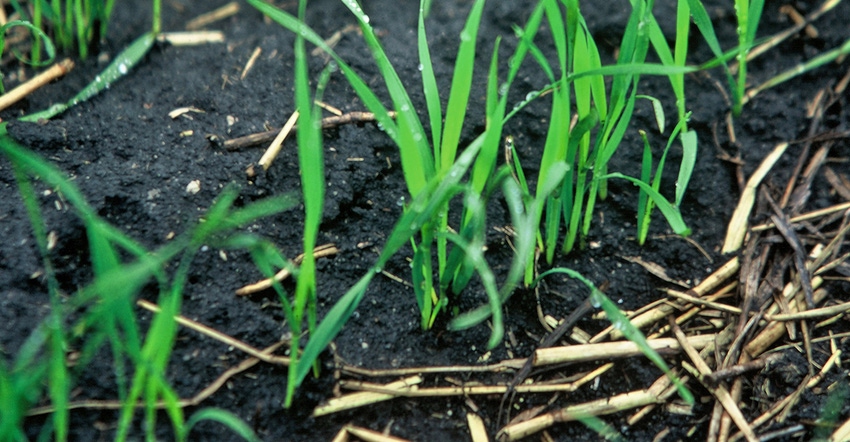August 28, 2017

Rhizoctonia is a sneaky disease that can have a negative impact on wheat growers’ bottom lines. Often called a “hidden menace,” Rhizoctonia is a soilborne fungus that attacks cereal, soybean and canola fields. By infecting plants early-on, when they’re seeds and seedlings, Rhizoctonia weakens plants during preemergence and postemergence growth stages. It also feeds on the root system, causing slowed growth and damping off. Left untreated, Rhizoctonia can destroy entire fields.
Early signs and symptoms
All hope is not lost when it comes to protecting fields against Rhizoctonia. You can scout for damage, evaluate fields and develop management plans for next season.
While scouting, look for the following symptoms:
• failure of seed germination (seed decay)
• failure of seedlings to emerge from soil
• stunted crops and uneven stands
• reduced crop growth, development and vigor
• bare patches in fields
• brown lesions or decay in the outer root cortex
• shortened roots with darkened tips
• cankers at the soil line
Consider the environmental factors
Be certain to also consider the environmental factors when creating action plans for the following year. Rhizoctonia favors wet soil at planting followed by warm, dry conditions. Shortly after water absorption, Rhizoctonia infects seeds and young seedlings within the soil, leading to poor root health. Poor root health limits the plants’ ability to absorb water and nutrients, and manage stress, which causes stem breakage and root decay. Unless a grower has a side-by-side comparison, it’s often difficult to realize that Rhizoctonia is reducing root efficiency. And if left untreated, Rhizoctonia can reduce a crop’s maximum yield potential by up to 40%.
Take proactive approach
Beginning at the seed level, growers can plant certified seed varieties to help ensure genetic purity, smoother plant ability, seedling vigor and improved germination and emergence.
Using a seed treatment is another tool that provides early-season protection from Rhizoctonia and promotes development of a larger final root mass.
Early root development lost due to Rhizoctonia, or any stressor, cannot be regained.
If you suspect Rhizoctonia might be hiding in your field, consult with your crop adviser and local agronomist, and consider using a certified seed variety and seed treatment next season.
Popiel ([email protected]) is the Syngenta agronomic service representative in North Dakota. Syngenta sells AgriPro wheat varieties and Cruiser, CruiserMaxx, Vibrance and other seed treatments.
About the Author(s)
You May Also Like




